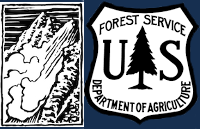The snowpack near Bridger Bowl is roughly 2 ft deep on the upper mountain. The pack consists mainly of dense, well bonded snow; however, an ice crust in the lower pack rests on a weaker layer of mixed forms and facets. This layer did propagate during an ECT indicating it has the ability to propagate a fracture. Currently, there is not enough snow to make this layer a major problem, but with a heavy load it could become reactive.
12-13
GNFAC Avalanche Forecast for Sun Nov 25, 2012
Since snow fell Wednesday night we have not gotten any reports of avalanches. Skiers and climbers are finding mostly stable conditions. Above 8,000 feet the northern mountains have a layered snowpack about 1.5 feet deep with 2-2.5 feet in the southern areas. We are not finding or hearing about widespread instabilities; two days of avalanche control at Big Sky did not produce slides either. However, there are pockets of weaker facets on high elevation north-facing slopes.
Forecast link: GNFAC Avalanche Forecast for Sun Nov 25, 2012
GNFAC Avalanche Forecast for Thu Nov 22, 2012
Carve some turns, carve some turkey.
The new snow came in moist and is measuring at least 10% density. It was also windy during the storm and continues to blow strong at the ridgelines. I have one main avalanche concern: wind slabs. Wind-loaded slopes near the ridgelines are where a person could trigger an avalanche. Since winds are expected to keep loading these slopes in the next few days, this localized danger will remain.
Forecast link: GNFAC Avalanche Forecast for Thu Nov 22, 2012
GNFAC Avalanche Forecast for Fri Nov 16, 2012
We currently have limited snowpack data, but we can make a few generalizations that will help guide your hunt for instabilities. There have been 3 weather events that have formed the 3 basic layers in the snowpack.
This snowpit was dug in an East facing bowl under Hardscrabble Peak just north of Fairy Lake. A combination of snow and rain followed by very cold temperatures formed a thick, hard layer of ice at the ground. Dense snow from Veteran's day weekend is supporable and well bonded to this icy snow. Photo: GNFAC
GNFAC Avalanche Advisory for Sat Nov 10, 2012
The snowpack depth doubled in many areas. The snow from this storm also weighed a lot; it measured 10% density. In many places the new snow fell onto a dense, strong base, but this may not be the case everywhere. We do not know. However, we do know that rapid, large loads of snow, like this storm, can cause avalanches.
GNFAC Avalanche Advisory for Fri Nov 2, 2012
Most areas have 5-10 inches of snow on the ground except the mountains near Cooke City that have 15-24 inches. Regardless how much snow is reported, if there is enough snow to ski or ride, there is enough snow to produce an avalanche. Last Sunday 3 skiers were partially buried in an avalanche in the northern Bridger Range following a storm with 18-24 inches of new snow and strong winds. Two were injured with one sustaining a pelvic fracture which required evacuation by Search and Rescue. The full accident report is available
